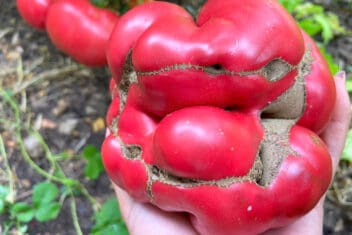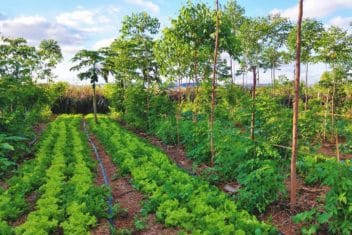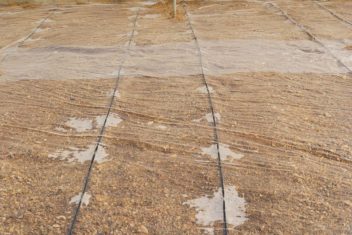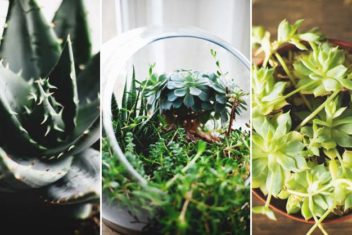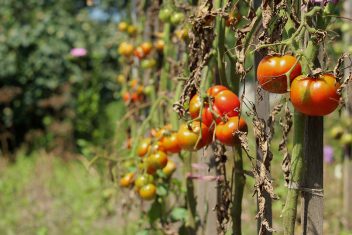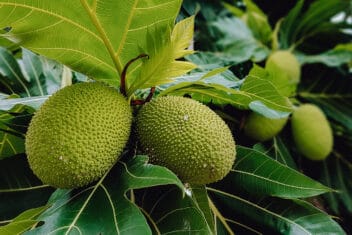I know a lot of gardeners who have started to use winter cover crops to keep their garden protected from erosion, add fertility, and suppress weeds. Despite the popularity of winter cover crops, though, many gardeners still haven’t started using hot weather cover crops in summer.
In part, I think that’s because most of us tend to do a lot of food growing in the warm months. So, our beds are more consistently full than in cooler weather.
Still, even in a summer garden, there are times when hot weather cover crops might come in handy. Let’s get into some reasons why you should consider adding summer cover crops to your gardening repertoire and how to do it.
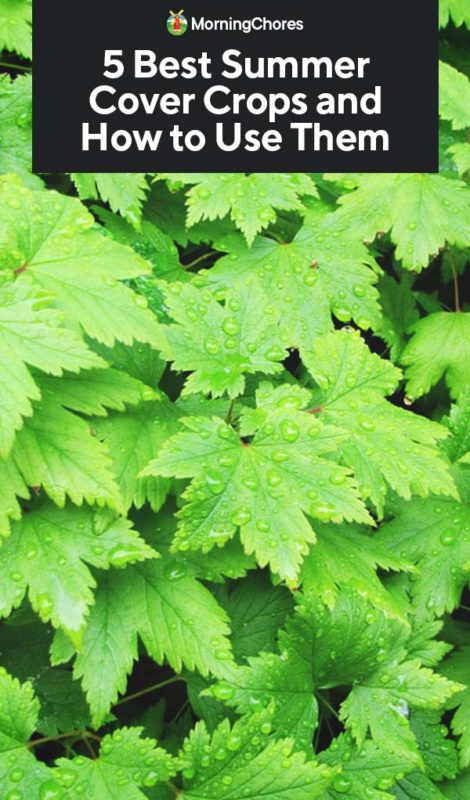
Reasons for Hot Weather Cover Crops
I can think of 5 big reasons to grow cover crops in your summer garden.
Reason 1: Vacation
I know so many gardeners who have left on vacation for a couple of weeks and come back to find their beautiful gardens devoured by insects and weeds. That’s because even if you only spend a few hours in the garden each week, you are constantly picking off pests, keeping up with the water, removing small weeds, and more to maintain your beds.
Without that routine care, weeds get big, water runs out, and pests move in to take advantage of stressed plants. Rather than letting your garden get overrun with problems, harvest what you can, pull up your more needy crops and start fast-growing cover crops. This will keep your soil in good condition even when you can’t care for it.
Most hot weather cover crops are fast germinating and require only a week or two of care to get started. So, plant 1 to 2 weeks before your scheduled vacation to make sure your cover crops take off and will work their magic while you are away.
Reason 2: Mid-Season Crop Failure
It happens to even the very best gardeners. You plant something, it grows for a while, then suddenly the plants die or disappear.
Pests get them. The plants become diseased. Your significant other mows over your winter squash with the riding mower or whatever else happens. So, then you’ve got this empty space in your garden.
If it’s early in the season you may just replant with more vegetables. But what if happens when you only have a 6-10 week window for growing before it’s time to plant fall crops?
You might not have sufficient time to get to harvest. So, rather than just leave that space open, this is a perfect time for cover crops to come to the rescue and save your soil from heat damage.
Reason 3: Increase Soil Fertility
You may also want to intentionally plant hot weather cover crops to increase your soil fertility ahead of your fall planting. There are various nitrogen adding legumes, such as cowpeas or bush green beans, that work well as a hot weather cover crop.
All you need to do is grow them using a legume inoculant until they begin to flower. Then you can mow them down and turn the soil lightly to expose the roots and dry them out.
While the plants decay, they will add nitrogen to the soil. Also, you can even plant new seeds as the legume residues decay.
Just push aside some of that plant matter and drop in your seeds. Then, as your seedlings emerge, side-dress those new plants with the decaying leaves as both a mulch and nitrogen source.
Reason 4: Scavenge Nutrients
Sometimes we blow it and over-fertilize our gardens. Maybe our math was wrong or we didn’t use this most awesome fertilizer calculator. Or maybe we used homemade amendments and overestimated the amount of nitrogen we’d need.
Excess nitrogen is a boon to some plants like corn or cabbage, but it can be detrimental to light feeders. So, for example, if you planned to put some beets in next and discovered you had too much nitrogen, you could plant a cover crop to draw out some of that nitrogen quickly before you start your beets.
Things in the grass family such as sudangrass-sorghum, or even extra corn seeds grown and mowed when they reach knee height, can draw out nitrogen in hot weather. Then, you can add that green matter to your compost pile using our compost calculator.
Reason 5: Compost Maker
One of the most famous organic gardeners, John Jeavons, author of How to Grow More Vegetables advocates devoting 60% of your garden beds to growing cover crops for compost. By doing this, you can grow a lot of green matter for your compost, manage minerals, and avoid having to buy as many external inputs to nourish your soil.
Even if you don’t dedicate that much space to making compost greens, growing cover crops in summer whenever you have an open space in the garden can increase your compost creation abilities while making sure you don’t leave extra nutrients in the ground to wash away every time it rains.
How to Use Hot Weather Cover Crops

Using hot weather cover crops is very similar to using cool weather cover crops. You will, of course, use different varieties for best results. No one ought to try to grow mustard as a cover crop in 100ºF weather! However, beyond seed selection, cover crops are cover crops.
If you are new to using cover crops, here’s a quick overview of the process.
Step 1: Prepare the Soil
Cover crops grow well in prepared garden soil. They usually aren’t as picky about soil requirements as other plants. But they will grow better in soil that is well-drained, has some organic matter, and has sufficient fertility for good growth rates.
Step 2: Direct Plant
You’ll be planting your seeds densely and cover crops germinate quickly. So, the best method for planting is to direct seed.
You can broadcast seeds on the surface of the soil and cover lightly with fresh compost. Or, you can drill them in either by hand or using a seeder.
Step 3: Water Well
Cover crops generally aren’t hard to germinate. However, hot weather often makes for dry soil. So, if you want good results, you do need to water about every other day until plants are at least a few inches tall.
Step 4: Keep Weeded
Until cover crops take off, you will need to keep your bed weeded. However, since you densely plant your cover crops, as soon as they size up a bit, they tend to provide their own weed prevention by crowding out the competition.
Some hot weather cover crops such as buckwheat are also somewhat allelopathic and suppress some weed growth around them.
Step 5: Grow and Mow
In general, you can mow down your cover crops and lightly till them in at any point that you need your bed back. For the most biomass, or in the case of nitrogen-fixing legumes, you’ll want to grow them until they start to form flower buds.
Unless you are growing your cover crops for pollinators, there is usually no benefit to letting them flower. Flowering is a nutrient intensive process and may take more from your soil than you planned when you planted your cover crops. Also, flowering produces seeds and you may get repeat cover crops whether you want them or not if you let plants form seeds.
It feels like a horrible waste to cut a plant before they even produce anything. However, if you are really growing a “cover crop” and not just a different kind of crop, then you’ll want to mow as soon as the first blooms emerge and before they open.
Top 5 Picks for Hot Weather Cover Crops
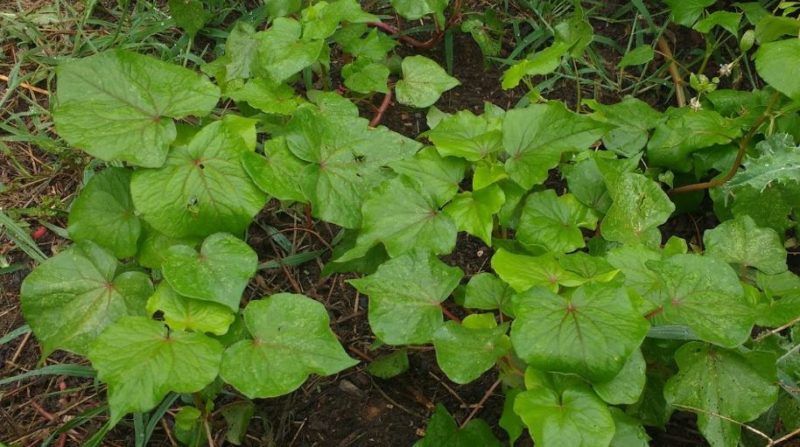
Now that you have some great reasons to use hot weather cover crops and know the basics of how to do it, it’s time to choose your weapon!
OK, I know…weapon might be a bit of an overstatement. But cover crops do protect and proactively support your garden health, so I think of them as garden heroes.
Here are my favorite hot weather soil savers to the rescue.
Pick # 1: Buckwheat
Its beautiful heart-shaped leaves that emerge in just a couple of days of planting, and the fact that most farm supply stores carry it, makes buckwheat my number one pick. As long as you water it, buckwheat will germinate in super hot weather and take off like a champ when other plants are slower to start.
Plus, it’s a piece of cake to grow buckwheat organically. I have never once had a pest problem with buckwheat as a cover crop (or even a grain crop).
Pick # 2: Sudangrass-Sorghum
Sorghum is used to make a sugary substance. But, when crossed with sudangrass it’s also super sweet as a hot weather cover crop.
It shoots up quickly, can be planted in dense masses for quick biomass. It may also reduce pesky nematode populations.
It also uses a C4 nitrogen path, similar to corn and amaranth. That means it can stay healthy even in hot, dry weather once well-established.
Pick # 3: Millet
There are several kinds of millet that make great hot weather cover crops. Japanese and foxtail millet tend to do better if planted while day length is increasing such as in June in the Northern hemisphere. Pearl millet can be planted as long as it’s hot.
Millets are my absolute favorites for hot dry climates if you won’t be able to water for a while.
Pick # 4: Cowpeas
Cowpeas are a southern style bean that loves hot weather. As a vegetable, they are normally grown for drying beans to be eaten in winter. They are a lot of work to harvest as a drying bean. But, to fix nitrogen and quickly cover a garden bed mid-summer they are my favorite legume.
They seem to take hot, dry or humid conditions equally well. Also, if you have issues with bean beetles, they tend to hold up better than many other bean types.
Pick #5: Bush Green Beans
If you have some extra heat-loving, bush-style green bean seeds leftover, you can also use those as a quick cover crop. My current favorites for both eating and cover cropping are Calima and Trout beans.
Both of these germinate well in hot weather, have a nice compact bushing habit, and hold up well to insect pressure in good soil.
Legume Inoculant
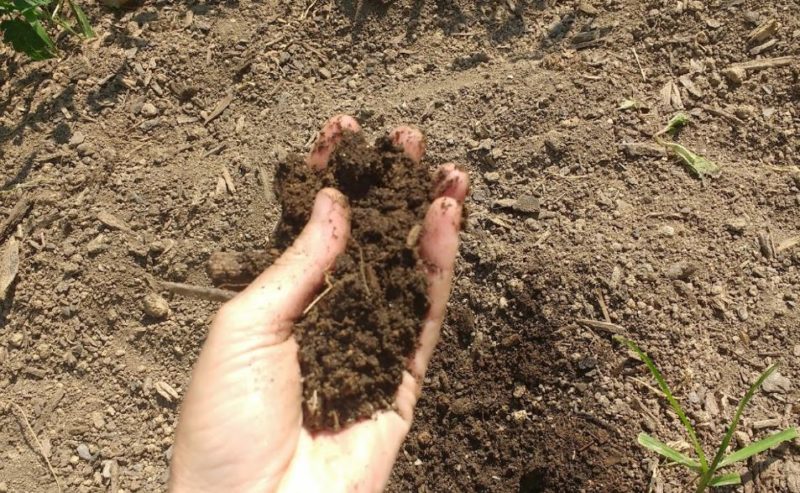
For my cool weather cover crops, I don’t really use legume inoculant anymore. After growing so much clover, hairy vetch, and Austrian peas to improve my soil in winter, I just don’t seem to need to add it to get great nitrogen-fixing results.
In hot weather, because beans grow so fast and the soil tends to be drier, I get much more nitrogen-fixing action if I coat the seeds with inoculant before planting. You can buy inoculant specifically for cowpeas or use a general garden inoculant if you have it.
Cover Crop Conclusions
Cover crops are wonderful to use any time you need to fill a gap in the garden or improve your soil before planting. Don’t limit yourself to winter cover crops when you can reap their benefits all year long!


